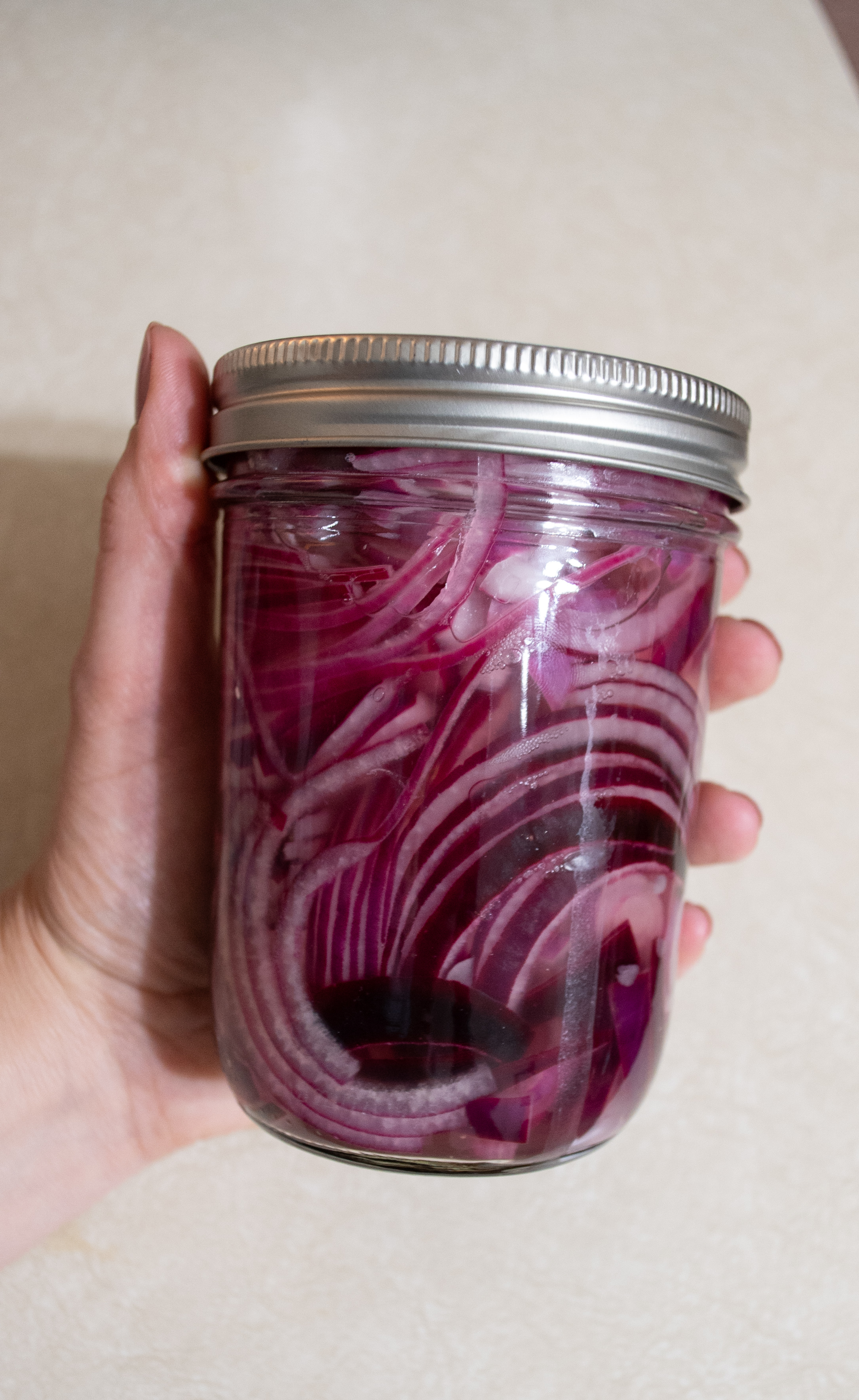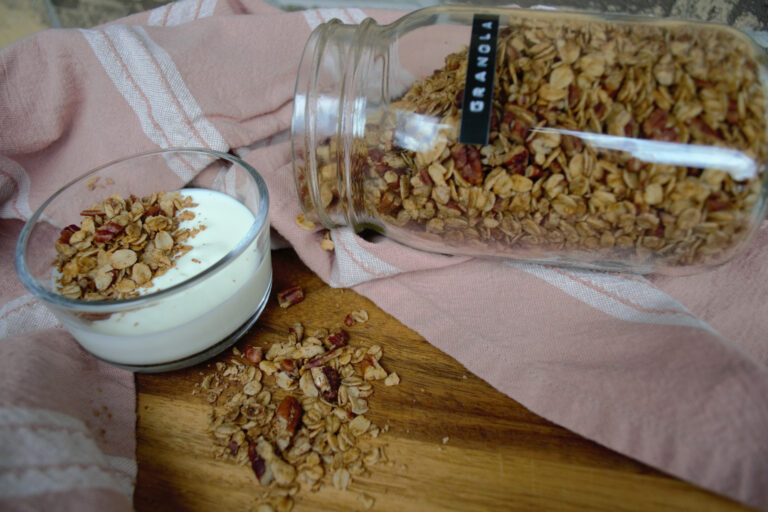How to Make Perfect and Simple Pickled Red Onions

Homemade condiments are perfect at dressing up any meal and these quick pickled red onions are no exception! While this simple way to preserve red onions, it is sure to enhance your everyday meals with a burst of flavor
How to use Pickled Onions
These are perfect to keep in the fridge for many culinary occasions. Pickled red onions can be used on a wide variety of foods. Most suggestions will be to add them as a topping but others will be within a mixture of a dish. Common suggestions include on top of tacos, sandwiches, salads, burgers, pizza, rice bowls and gyros.
What makes pickled onions pink?
The purple pigment of red onions infuse into the vinegar based brine. Over time, the brine and onions turn a light pink. You will likely see the brine begin to turn a light pink almost immediately after adding the brine. This light pink will continue to darken as they sit in the fridge.
The Brine
The brine for these pickled onions is extremely simple. You will likely already have all the ingredients in your kitchen. For this brine, you will need white distilled vinegar (preferably 5% acidity), water, salt and cane sugar.
The Shelflife of Pickled Red Onions
Other sources state that pickled red onions will store for 3 weeks. However, I have experienced that they stay good for at least a few months if kept in a cooler location in the fridge. Like with any food, use visual and scent queues to determine if the onions are still safe to eat.
Looking for more recipes? You might like this oven roasted chicken or this sriracha mayonnaise.
Ingredients and tools

Red onions
A glass jar or other airtight container
A small saucepan
The brine:
water (1 cup)
white vinegar (1 cup)
Sugar (1 Tablespoon)
Salt (1 tablespoon) – I like to use Redmond Real Salt
Directions
Add all brine ingredients to the small saucepan and stir until the sugar and salt dissolve.
Heat your brine until it is lightly simmering.
While your brine is heating, thinly slice your onions.
TIP on cutting your red onion: Cut your onion in half from root to stem.
With the center of your onion flat on the cutting board, cut the onion beginning at the stem side and moving toward the root end in as thin of slices as you can.
After cutting the onions, you should have slices that resemble a rainbow or half circle.
When all your onines are sliced, break apart the layers and add the slices to your glass jar being sure to pack them in tightly.
After your brine is come to a simmer, remove from the heat and add the hot brine to your prepared jar until all onions are covered. Remove any bubbles from your jar with a small silicone scraper or small wooden spoon.

If needed, add additional brine to cover all onion slices.
Once cooled until there is no longer any steam, secure an airtight lid and place in the refrigerator. For best flavor, let the onions sit for a few days to a week before enjoying.
Some sources stat that pickled red onions will store for 3 weeks. However, I have experienced that they stay good for at least a few months if kept in a cooler location in the fridge.
Pickled Red Onion FAQ:
What is a quick pickle?
A quick pickle is a preservation method using a vinegar based brine. This brine is applied to a low acidic food. The added acid will extend the shelf life of that food in the refrigerator.
The most common quick pickle is made with cucumbers to make a pickles. Other produce items to make into a quick pickle include green beans (made into dilly beans), pickled red onions, asparagus, carrots and beets.
How do I use pickled onions?
Pickled red onions can be used on a wide variety of foods. Some suggestions include on top of tacos, sandwiches, salads, burgers, pizza, rice bowls and gyros.
How long will these pickled onions last?
You may find other sources stating that pickled red onions can be stored for 3 weeks. However, I have experienced that they stay good for at least a few months if kept in a cooler location in the fridge. Like with any food, use visual and scent queues to determine if the onions are still safe to eat.
Did you try this? Share your creations in the comments or by tagging @MissysHomestead on Instagram.


